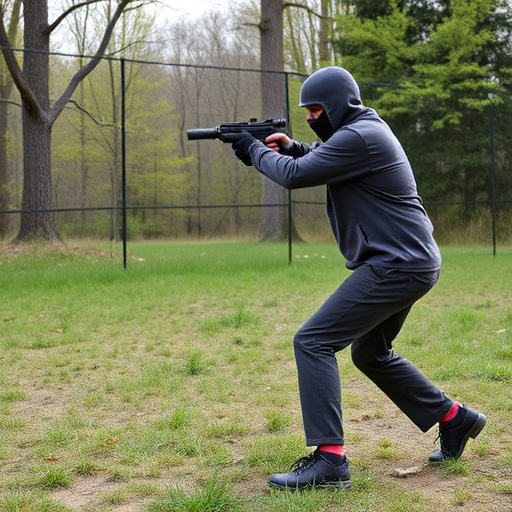Self-defense stun guns, with their electrical arc displays, act as powerful visual deterrents against potential attackers, making them a crucial factor in decision-making for college students. With compact designs and ease of concealment, these stun guns offer immediate personal safety solutions on campuses where harassment or assault risks exist. Properly chosen and used, they can enhance protection through high-voltage output that serves as a psychological deterrent, temporarily paralyzing assailants to enable escape.
Electrical arc displays, often associated with power outages or industrial accidents, can deliver a striking visual spectacle. This article explores how these intimidating flashes impact self-defense strategies, particularly for college students considering personal safety measures. We delve into the psychology behind their effect, examining the role of lighting, duration, and frequency. Understanding these factors is crucial when evaluating self-defense tools like stun guns as viable options for campus safety.
- Understanding Electrical Arc Displays: The Visual Impact
- Self-Defense and Stun Guns: A College Student's Perspective
- Factors Influencing Intimidation: Beyond the Flash
- Choosing the Right Tool: Stun Guns for Personal Safety on Campus
Understanding Electrical Arc Displays: The Visual Impact
Electrical arc displays, often seen in stun guns designed for self-defense, present a powerful visual deterrent. When activated, these devices create an intense, glowing arc that can instantly grab attention and convey a strong message of protection. The visual impact is significant; it serves as a stark reminder to potential assailants of the consequences they may face if they dare to threaten a person armed with such a device.
For college students considering self-defense stun guns, understanding the intimidating nature of these displays can be a key factor in their decision-making process. The arc’s ability to deter and incapacitate an attacker through shock and disorientation is well-documented, making it a valuable tool for personal safety. Its prominent visual presence ensures that even from a distance, bystanders can recognize the device as a means of protection, potentially deterring dangerous situations before they escalate.
Self-Defense and Stun Guns: A College Student's Perspective
For college students, navigating unfamiliar environments and potential threats can be daunting. Self-defense becomes a crucial aspect of personal safety, especially on campus where incidents of harassment or assault may occur. While physical training and awareness are essential tools, many students opt for more accessible options like stun guns as a form of self-defense. These compact devices offer an immediate deterrent and can provide the time needed to escape dangerous situations.
Stun guns designed for self-defense are easily concealable and relatively simple to use, making them appealing to college students looking for personal safety solutions. The intimidation factor associated with their high-voltage output can serve as a powerful psychological tool, deterring potential assailants. With proper training and understanding of the device’s capabilities, students can enhance their ability to protect themselves in various scenarios.
Factors Influencing Intimidation: Beyond the Flash
The intimidation factor of an electrical arc display goes beyond mere visibility. Several key factors significantly influence how threatening it appears, especially in self-defense scenarios relevant to college students carrying stun guns. One crucial aspect is the proximity and duration of the arc. The closer the arc is to the target and the longer it persists, the more intense the intimidation. This is because close-up displays can induce fear by simulating a dangerous, life-threatening situation.
Another influencing factor is the environment in which the display occurs. A dark or confined space amplifies the arc’s intimidating effect as contrast increases visibility and perception of danger. In contrast, well-lit public areas reduce this impact, making it easier for individuals to assess the situation rationally. Moreover, the context in which self-defense stun guns are used plays a role; legal and ethical considerations can moderate responses, especially if arc displays are perceived as excessive or unnecessary.
Choosing the Right Tool: Stun Guns for Personal Safety on Campus
Choosing the right self-defense tool, such as a stun gun, can significantly enhance personal safety, especially for college students navigating unfamiliar territories on campus. With an array of options available, selecting a stun gun tailored to one’s needs is crucial. Students should consider factors like power output (measured in millions of volts), weight, and ease of use when making this decision. A powerful stun gun with a high voltage can deter potential attackers, but it must also be lightweight and ergonomic for comfortable carrying.
For campus security, portability and swift deployment are key. Smaller, palm-sized stun guns offer discreet self-defense without drawing excessive attention. They are designed to deliver a strong electric shock, temporarily paralyzing an assailant long enough for the student to escape. This compact size makes them easily concealable, allowing students to feel safer while moving around campus.
Electrical arc displays, while visually striking, underscore the importance of understanding and preparing for potentially dangerous situations. For college students seeking self-defense solutions, stun guns offer a viable option. By considering factors like range, power, and ease of use, students can make informed decisions to enhance their personal safety on campus. Embracing proactive measures, such as acquiring a reliable stun gun, empowers individuals to navigate their environment with increased confidence and peace of mind in the face of unexpected threats.
